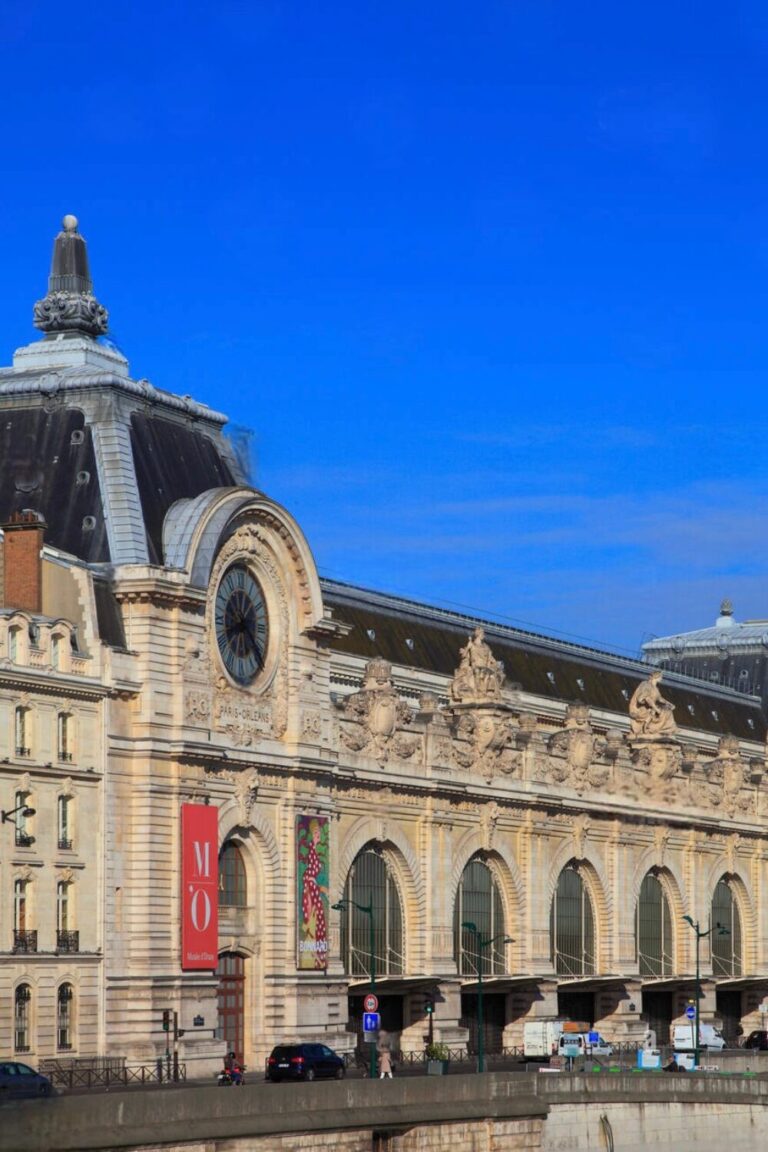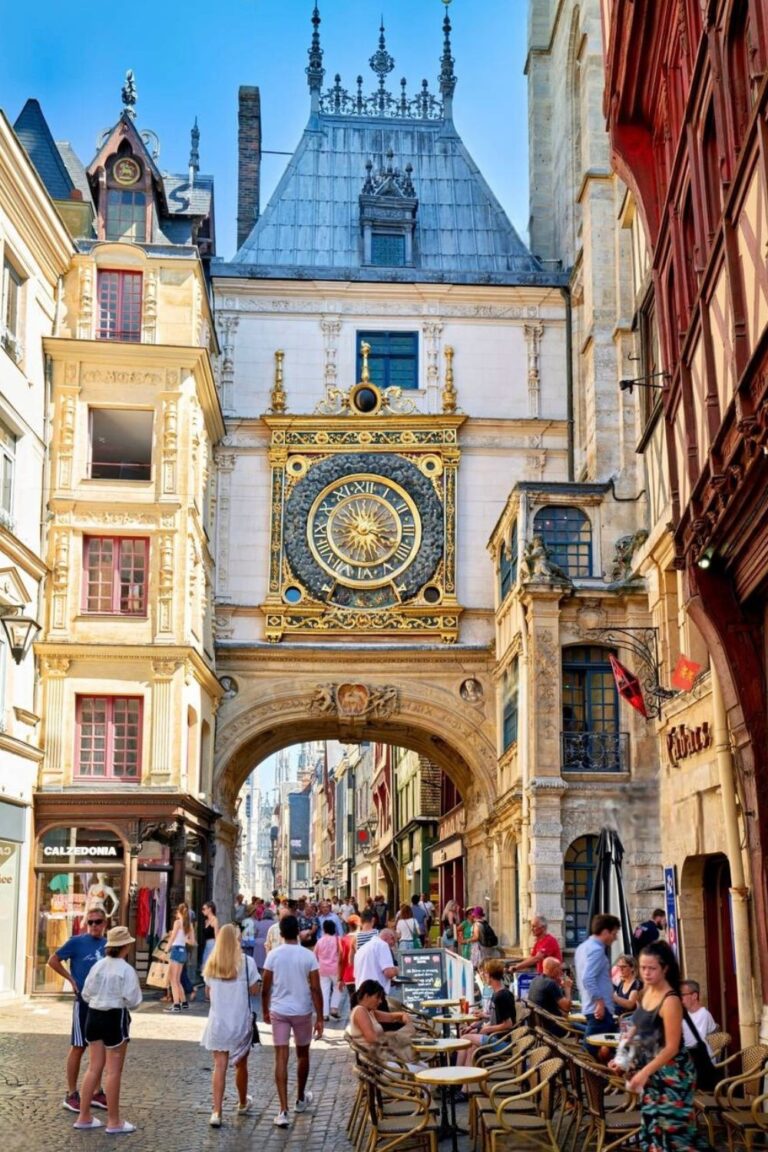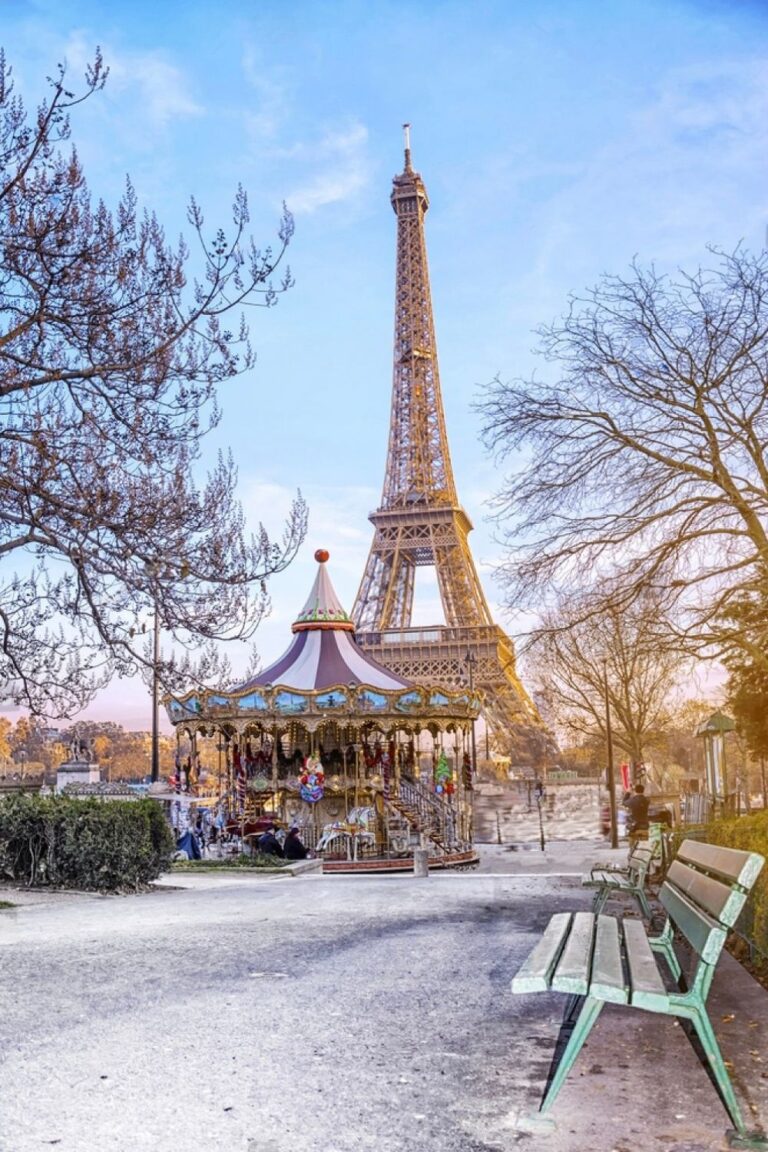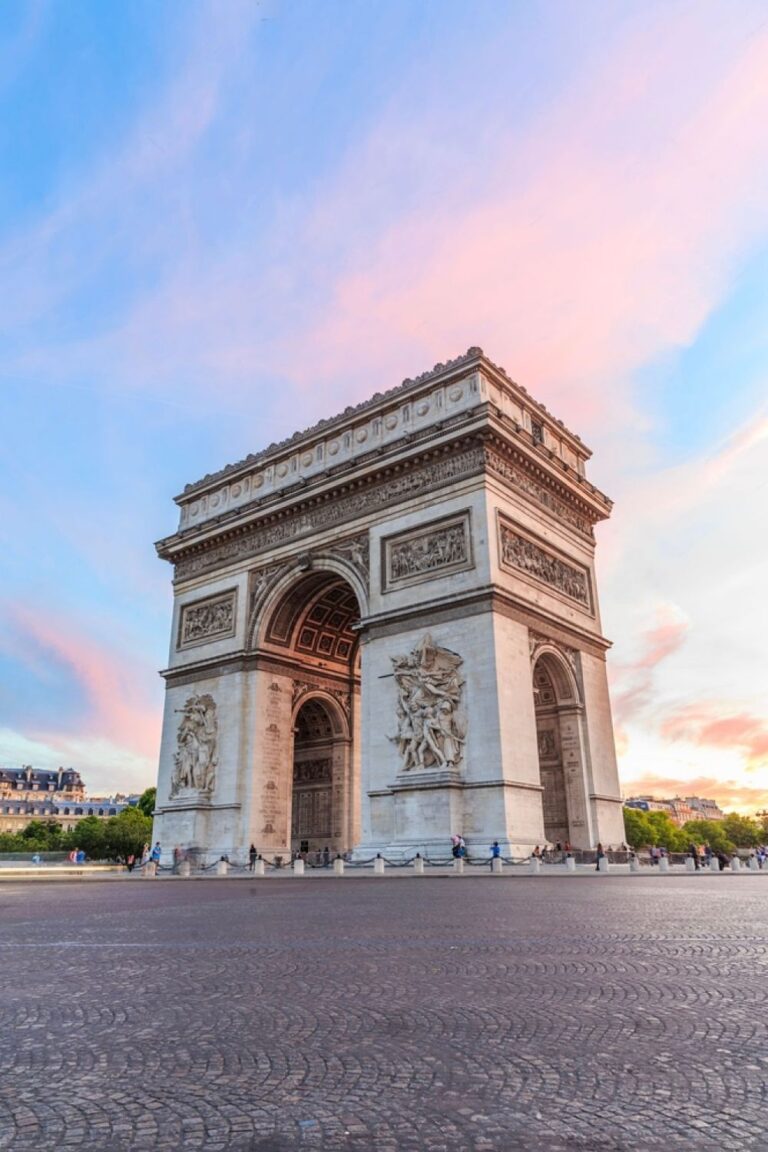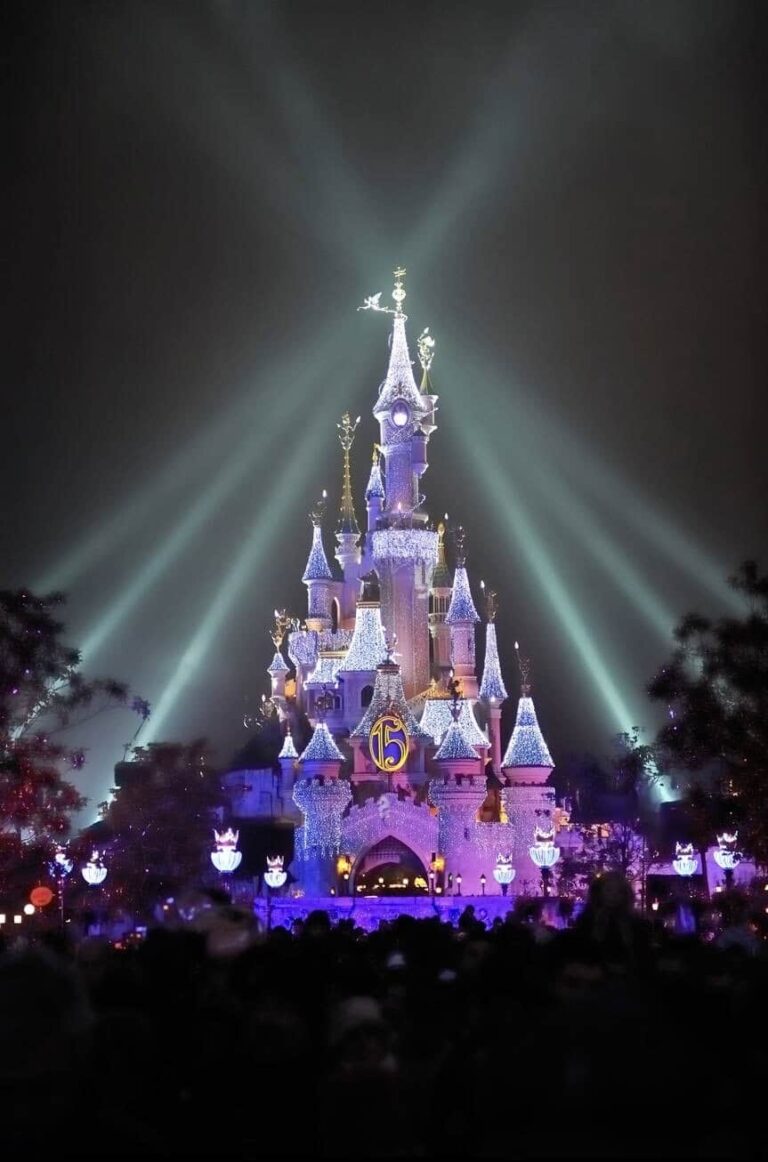Exploring 22 Famous Graves in Père Lachaise Cemetery
Last Updated on October 10, 2024 by April Nicole
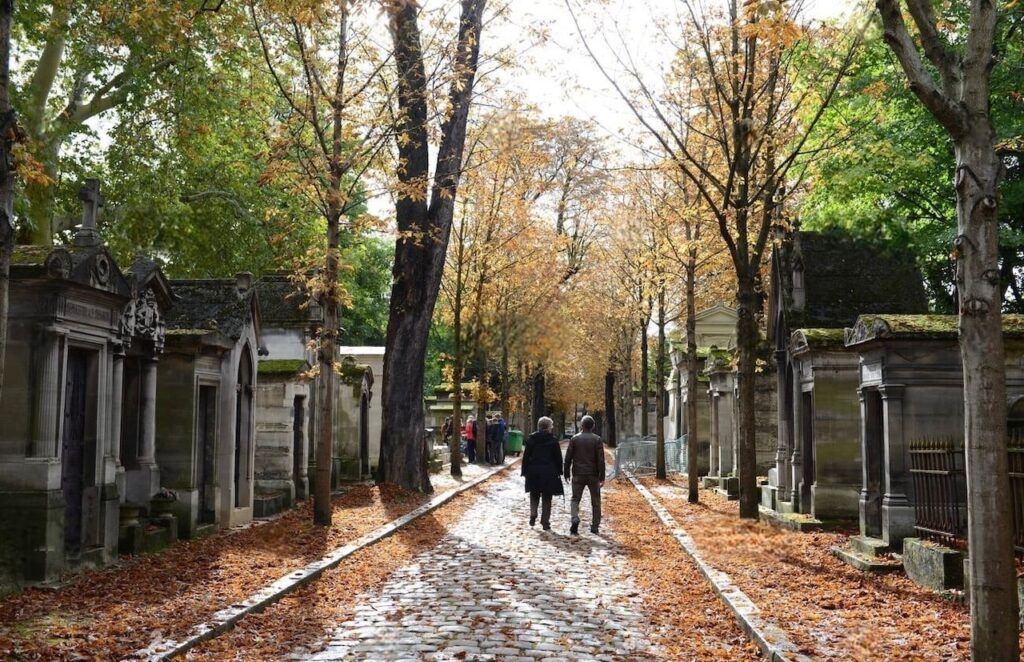
Traveling to Paris? Click here to download your free Paris Travel Guide. We’ll help you get ready for your trip!
Père Lachaise Cemetery, the largest cemetery in Paris, is renowned for its history and the famous people buried there. famous graves in Père Lachaise cemetery
As a site of cultural and historical significance, it attracts millions of visitors each year eager to pay their respects to luminaries such as Oscar Wilde, Jim Morrison, and Edith Piaf.
However, navigating this sprawling 110-acre cemetery can be daunting. Many visitors find themselves overwhelmed, struggling to locate the graves of their favorite historical figures.
Having spent years researching and exploring Père Lachaise Cemetery, I have developed an extensive knowledge of its layout and history. My expertise allows me to offer an ultimate visitor’s guide, making it easy for enthusiasts and history buffs to find the famous graves they seek.
This guide will help you uncover the rich tapestry of stories woven into the cemetery’s pathways, ensuring a meaningful and enriching visit.
If you are in a hurry, here’s a summary of famous graves in Père Lachaise Cemetery:
The History of Père Lachaise Cemetery
Père Lachaise Cemetery was established by Napoleon Bonaparte in 1804, designed to address the overcrowded cemeteries within the city limits. It was named after François de la Chaise, the confessor of King Louis XIV, whose former residence stood nearby. Designed by architect Alexandre-Théodore Brongniart, the cemetery spans over 110 acres and features winding pathways, impressive mausoleums, and lush greenery, creating a serene and contemplative environment.
The cemetery’s initial reception was lukewarm, as it was considered too far from the city center. However, the strategic relocation of the remains of famous individuals like Molière and La Fontaine boosted its popularity. Today, Père Lachaise is home to over 70,000 graves, attracting visitors from around the world who come to pay their respects and explore its historical and artistic significance.
Père Lachaise Famous Graves
Oscar Wilde (Division 89)

Oscar Wilde, the renowned Irish playwright and poet, is one of Père Lachaise’s most visited residents. Known for his wit and flamboyant lifestyle, Wilde’s tomb is a striking monument designed by sculptor Jacob Epstein. The tomb features a modernist angel inspired by Wilde’s poem “The Sphinx.” Visitors traditionally left lipstick kisses on the tomb, but this practice has been discouraged to preserve the monument. Wilde’s legacy as a literary genius continues to inspire, and his grave remains a testament to his enduring influence. famous graves in Père Lachaise cemetery
Honoré de Balzac (Division 48)
Honoré de Balzac, a prolific novelist and playwright, is commemorated with a grand monument featuring his bust. Balzac’s extensive body of work, including “La Comédie Humaine,” provides a vivid portrayal of 19th-century French society. His grave stands as a tribute to his remarkable contribution to French literature and his enduring relevance.
Victor Noir (Division 92)
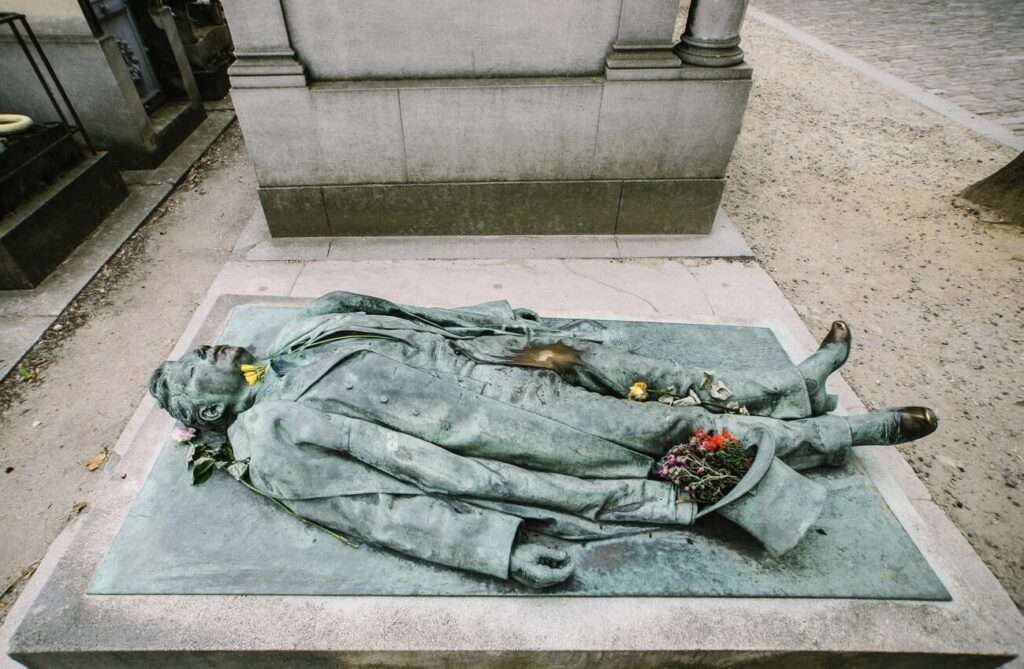
Victor Noir, a journalist, is known more for his death than his life. He was shot in a dispute, and his grave, featuring a life-sized bronze sculpture, has become a symbol of fertility. The bronze statue’s effigy is known for its prominent bulge, and local legend says that touching it brings fertility, a good sex life, and a happy marriage. Visitors often leave flowers and kisses as tributes.
Sarah Bernhardt (Division 44)
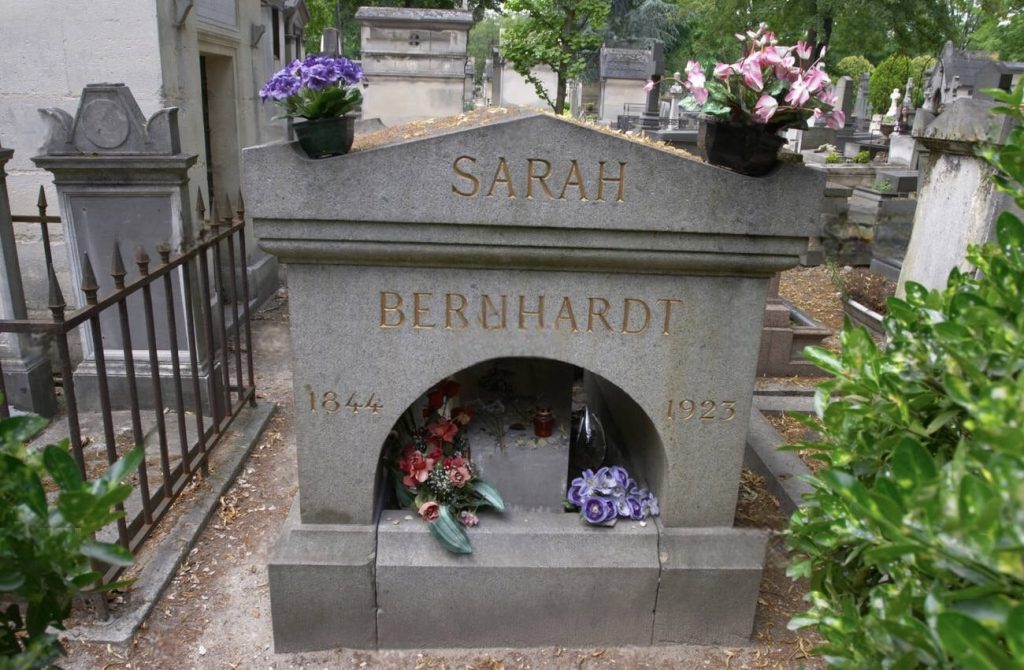
Sarah Bernhardt, often referred to as “The Divine Sarah,” was a legendary French stage actress. Her ornate tomb reflects her dramatic flair and theatrical legacy. Bernhardt’s performances captivated audiences worldwide, and her grave is a destination for those who admire her pioneering role in the theatre. famous graves in Père Lachaise cemetery
If you’re looking for intriguing museums to see in Paris, you can check out these 10 Unusual Museums in Paris You Must Visit too!
Georges-Eugene Haussmann (Division 4)
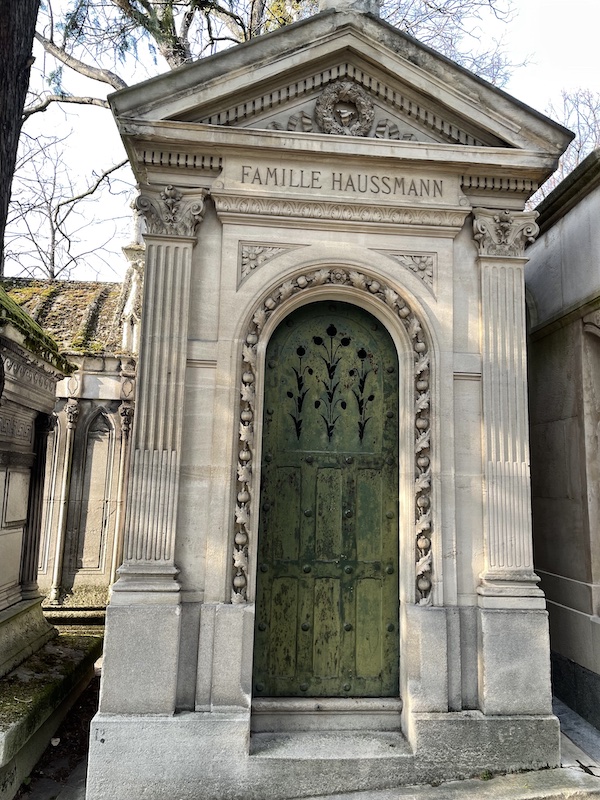
Georges-Eugène Haussmann, the urban planner responsible for much of Paris’s 19th-century renovation, has a tomb that reflects his significant impact on the city’s architecture and layout. His work on modernizing Paris, including the creation of wide boulevards and parks, has left an indelible mark on the cityscape. Haussmann’s grave is visited by those who appreciate his visionary contributions to urban planning.
Molière (Division 25)
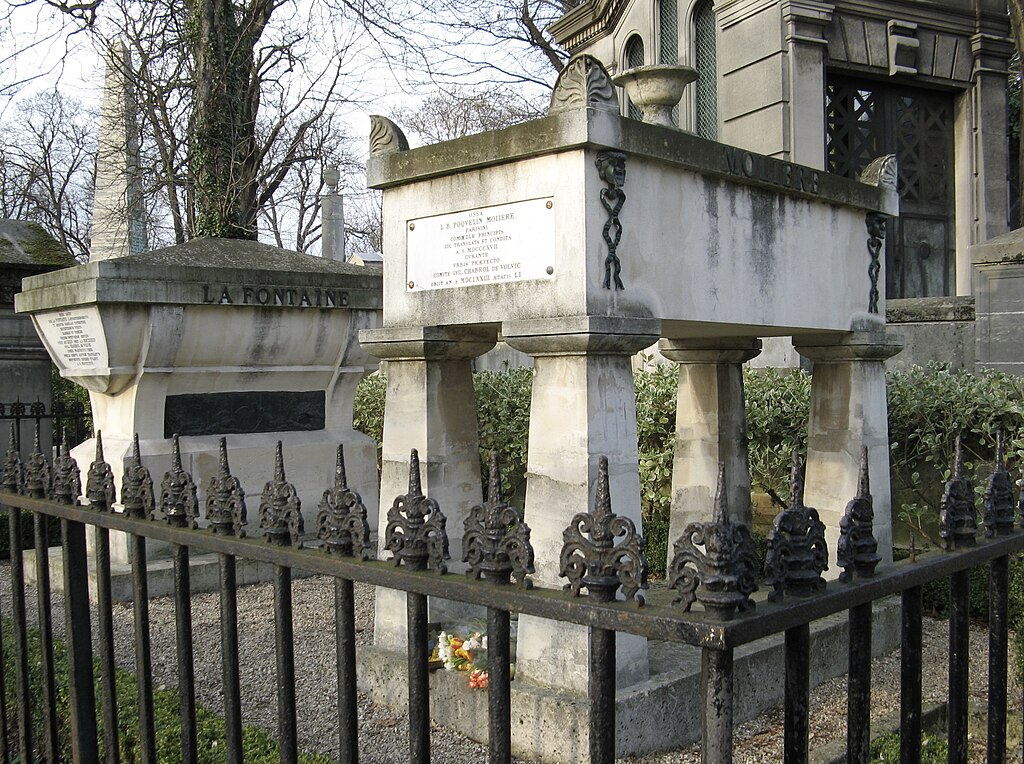
Molière, one of France’s greatest playwrights, is commemorated with a large, classical monument. His satirical plays, including “Tartuffe” and “The Misanthrope,” are still widely performed and studied. Molière’s grave is a place of homage for theatre enthusiasts and those who recognize his profound impact on French culture.
Amedeo Modigliani (Division 96)
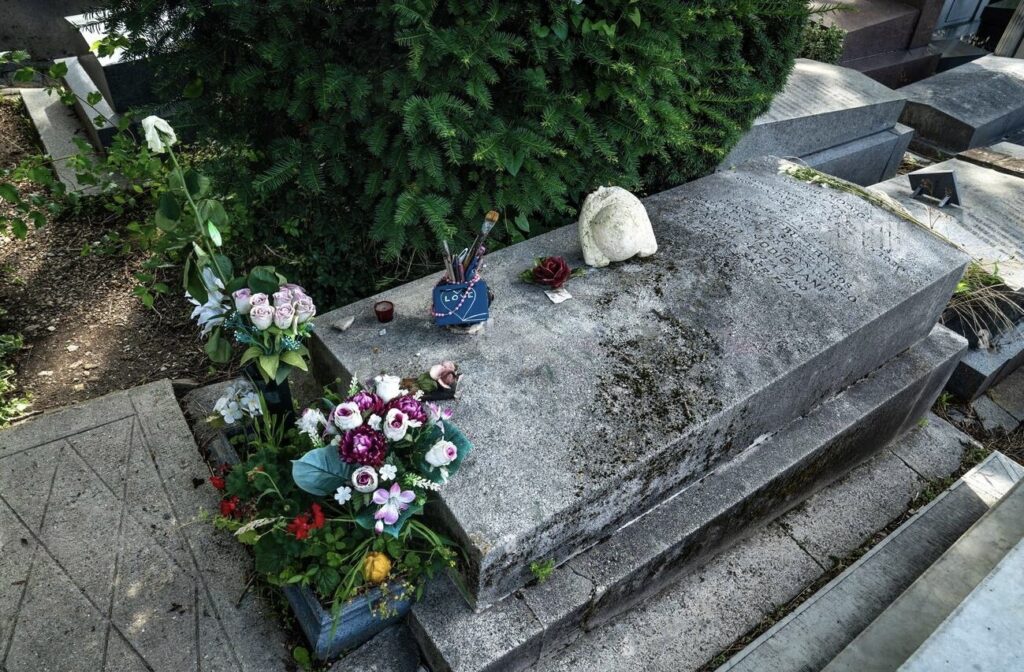
Amedeo Modigliani, the Italian painter and sculptor known for his distinctive portraits, lies in a simple, yet touching grave. Modigliani’s unique style and tragic life story continue to fascinate art enthusiasts. Visitors to his grave often leave flowers and tokens, celebrating his contribution to modern art.
Édith Piaf (Division 97)
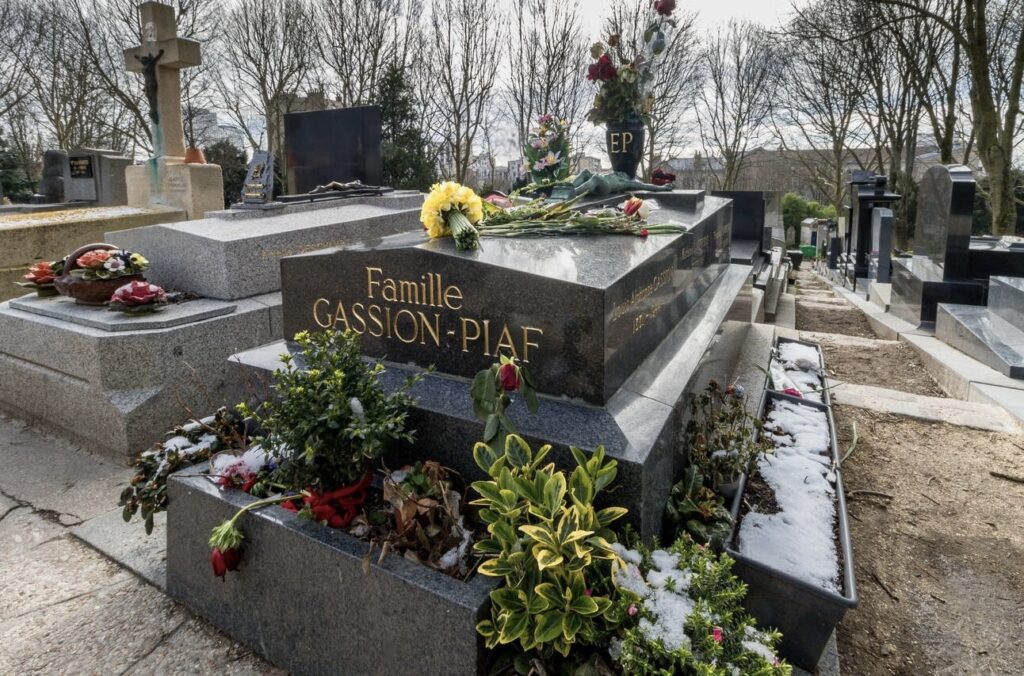
Edith Piaf, affectionately known as “La Môme Piaf,” is one of France’s most beloved singers. Her grave, shared with family members, is modest yet frequently visited by admirers. Piaf’s life, marked by triumphs and tragedies, is reflected in her music, which continues to resonate with listeners. Her final resting place at Père Lachaise serves as a poignant reminder of her contribution to French music and culture. famous graves in Père Lachaise cemetery
Isadora Duncan (Columbarium 87, Niche 6791)
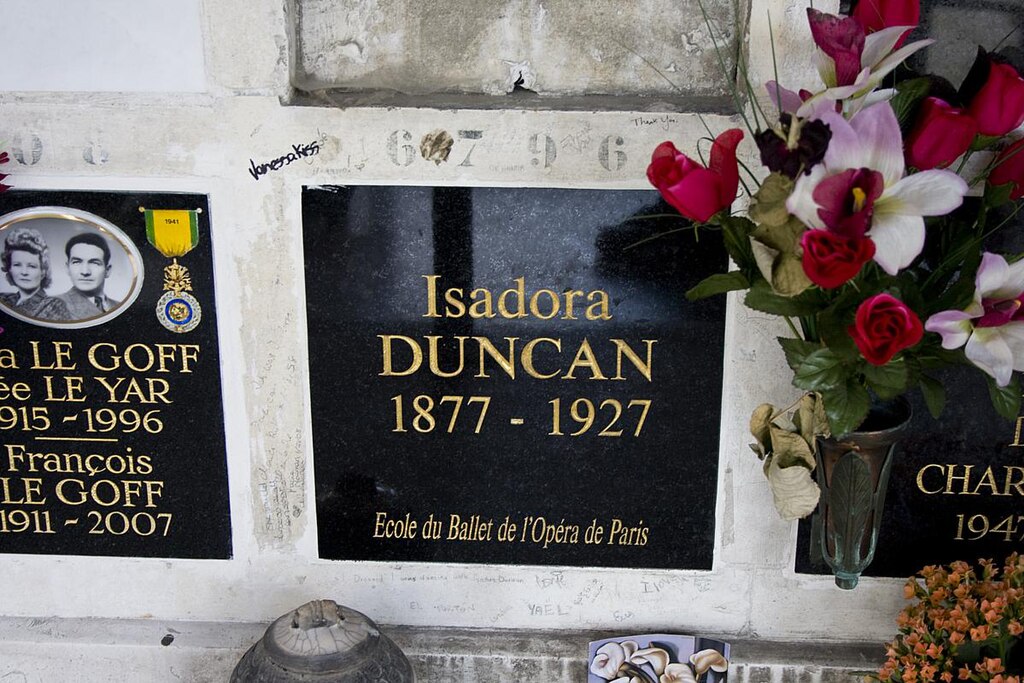
Isadora Duncan, a pioneer of modern dance, rests in a simple grave with her name. Duncan’s innovative approach to dance broke away from traditional forms, influencing generations of dancers. Her grave attracts visitors who honor her revolutionary contributions to the art of dance.
Richard Wright (Division 87)
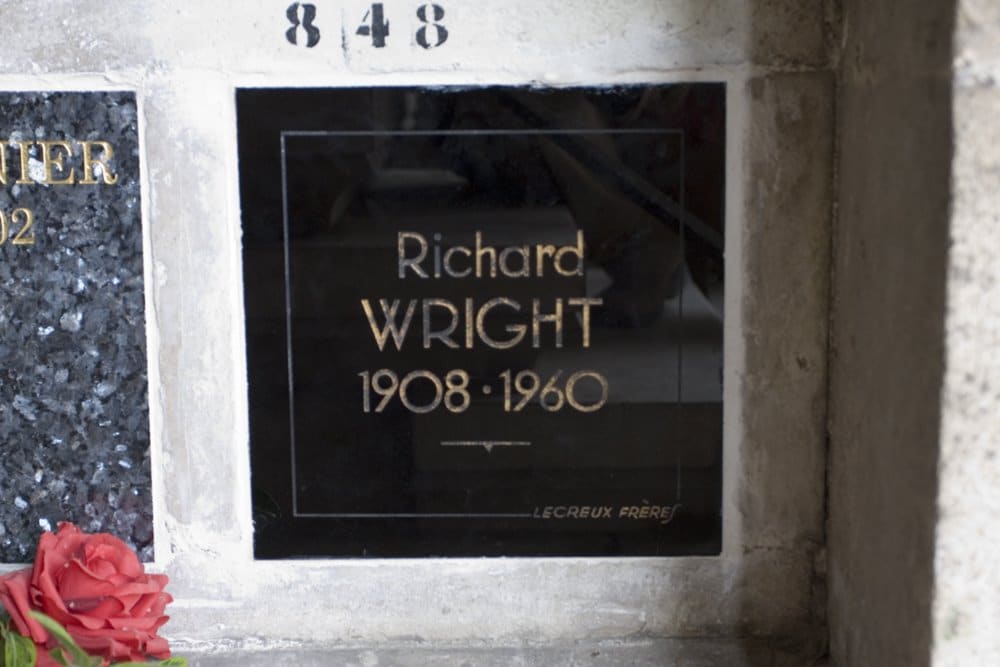
Richard Wright, the American author of “Native Son” and “Black Boy,” is buried in Père Lachaise. Wright’s work addressed themes of racial discrimination and social injustice, making significant contributions to American literature. His grave is a place of homage for those who respect his literary achievements and his courageous exploration of societal issues.
Theodore Géricault (Division 12)
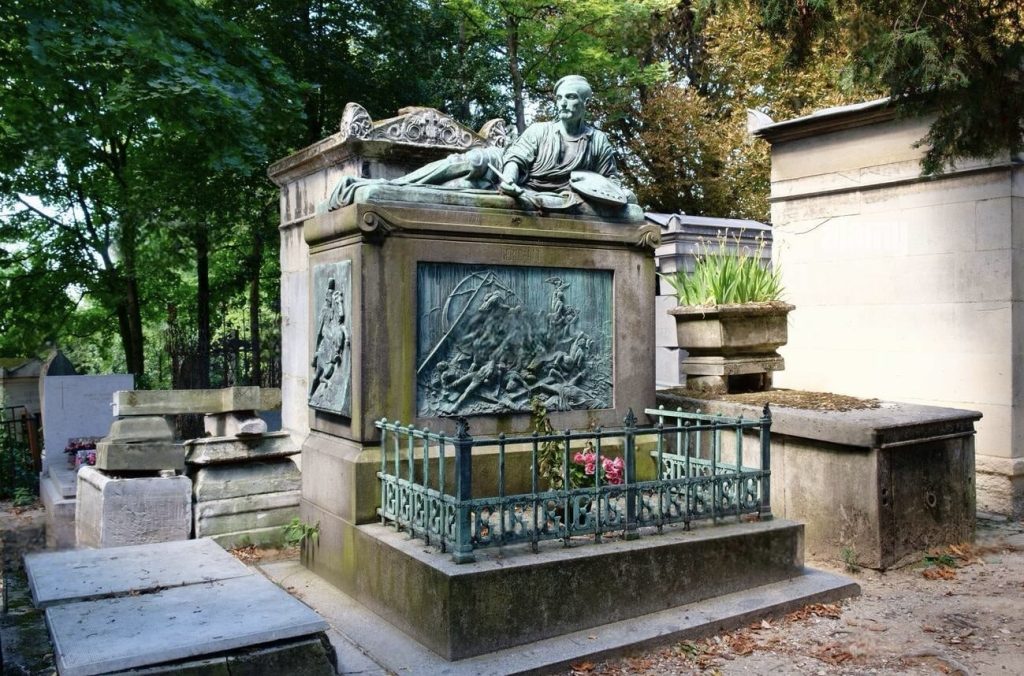
Théodore Géricault, the influential French painter known for “The Raft of the Medusa,” rests in an elaborate tomb. Géricault’s works are celebrated for their dramatic intensity and realism. His grave attracts art lovers who admire his role in the Romantic movement and his contribution to the evolution of modern art. famous graves in Père Lachaise cemetery
Elizaveta Alexandrovna Stroganova
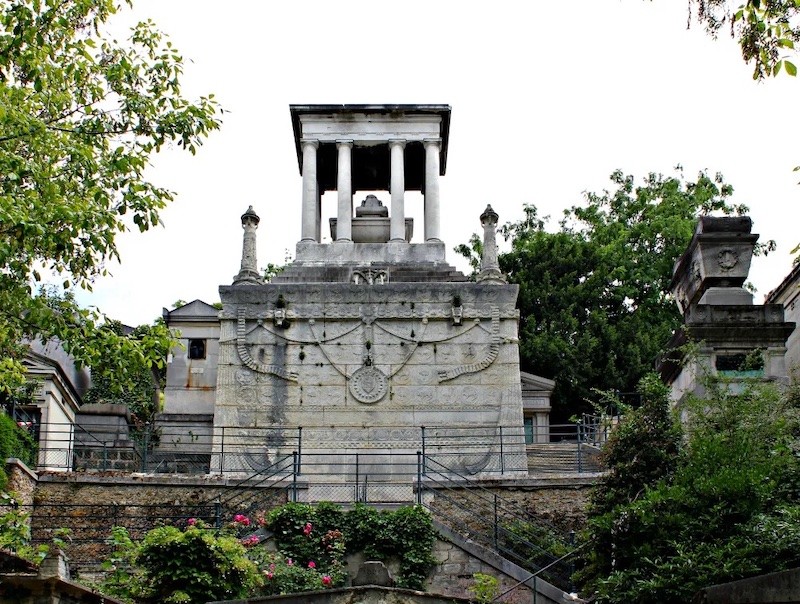
Elizaveta Alexandrovna Stroganova, was a Russian aristocrat and has the grave to go along with that title. Her resting place is one of the most massive ones you will ever set your eyes on, with her grave stretching several storeys high towards the sky.
Abelard and Héloïse (Division 7)
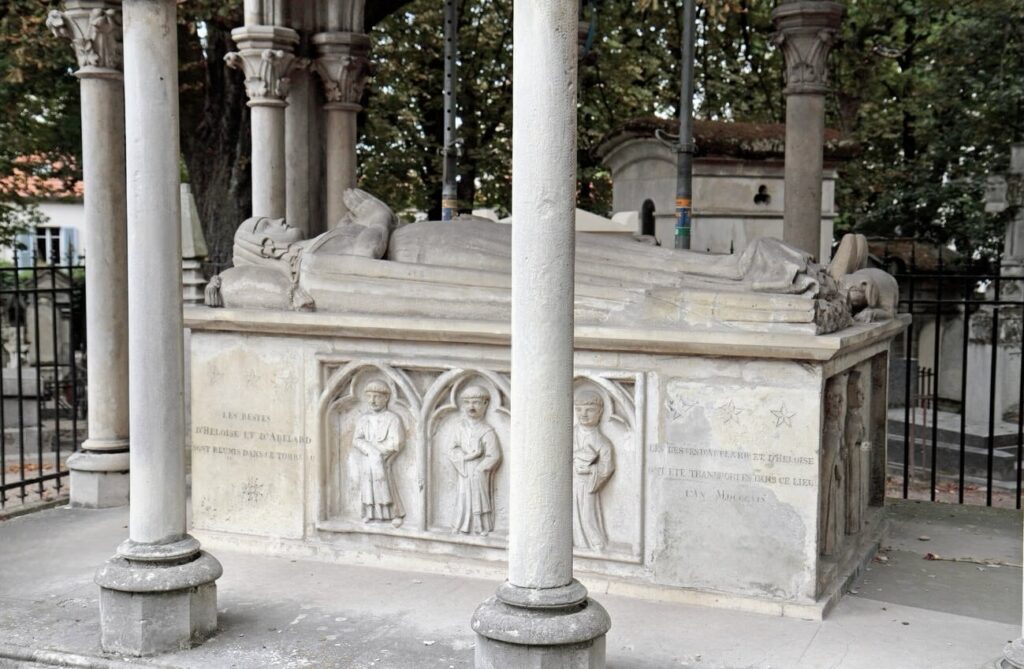
The legendary lovers Abelard and Héloïse are buried together in a Gothic-style tomb, symbolizing their enduring love story. Their tragic romance from the 12th century has captivated generations. The tomb of Abelard and Héloïse is a site of pilgrimage for those who appreciate their tale of love and intellectual brilliance.
Georges Rodenbach (Division 30)

Georges Rodenbach, a Belgian Symbolist poet and novelist, is remembered for his evocative descriptions of Bruges in his works. His tomb is adorned with a striking sculpture of the writer emerging from his grave, symbolizing his continued influence on literature. Visitors appreciate the artistic nature of his final resting place and his literary legacy.
Colette (Division 4)
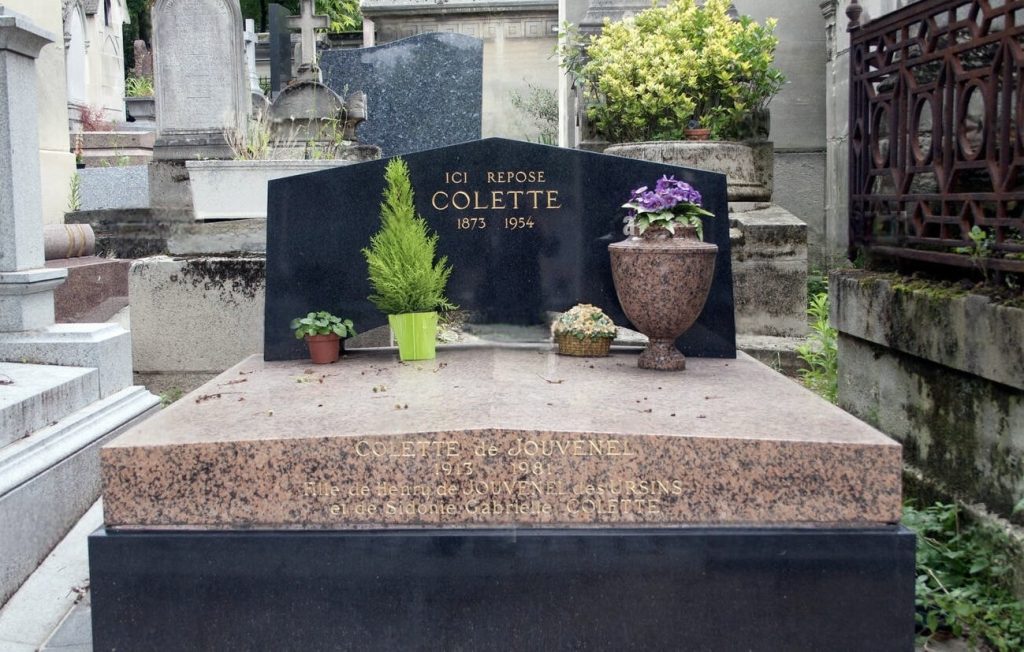
Colette, the celebrated French novelist and performer, lies in a simple grave marked with her name. Her works, characterized by their vivid depiction of female experiences, have left a significant mark on French literature. Colette’s grave attracts admirers who appreciate her literary contributions and her bold, independent spirit. famous graves in Père Lachaise cemetery
Jim Morrison (Division 6)

Jim Morrison, the enigmatic frontman of The Doors, has a simple yet iconic grave that draws thousands of fans annually. Morrison’s untimely death in 1971 in Paris led to his burial in Père Lachaise. His grave is often adorned with flowers, letters, and other tributes from fans. Despite its modest appearance, the site has become a pilgrimage destination for rock music enthusiasts, symbolizing Morrison’s lasting impact on the music world.
Eugène Delacroix (Division 49)
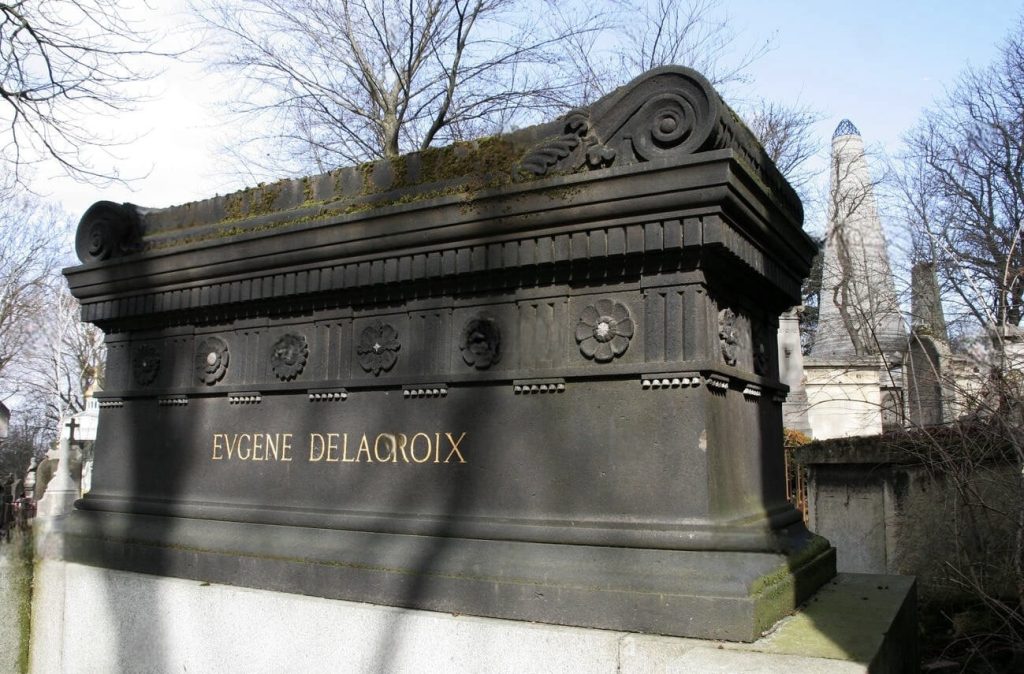
Eugène Delacroix, a leading figure of the French Romantic movement, has an artistic and elaborate tomb. Delacroix’s vibrant and dramatic paintings have earned him a lasting legacy in the art world. His grave is a destination for art lovers who admire his innovative style and contributions to Romanticism.
Frédéric Chopin (Division 11)
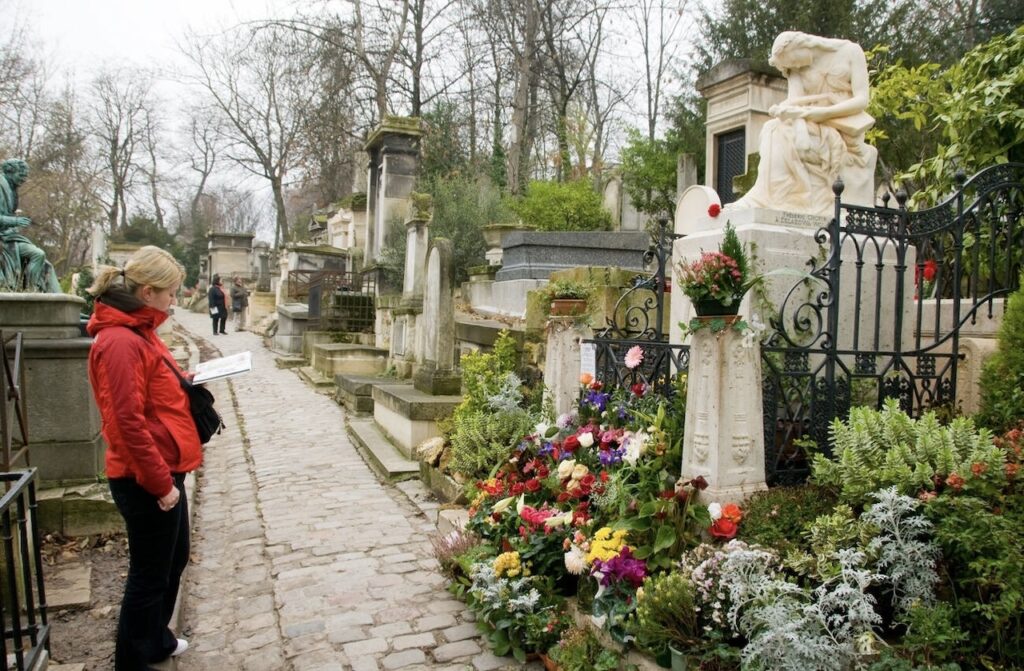
The elegant grave of Frédéric Chopin, the Polish composer and pianist, is adorned with a statue of Euterpe, the muse of music, weeping over a broken lyre. Chopin’s romantic compositions have left an indelible mark on classical music. His grave is a place of homage for music lovers, who often leave flowers and notes, celebrating his musical legacy. famous graves in Père Lachaise cemetery
Marcel Marceau (Division 21)
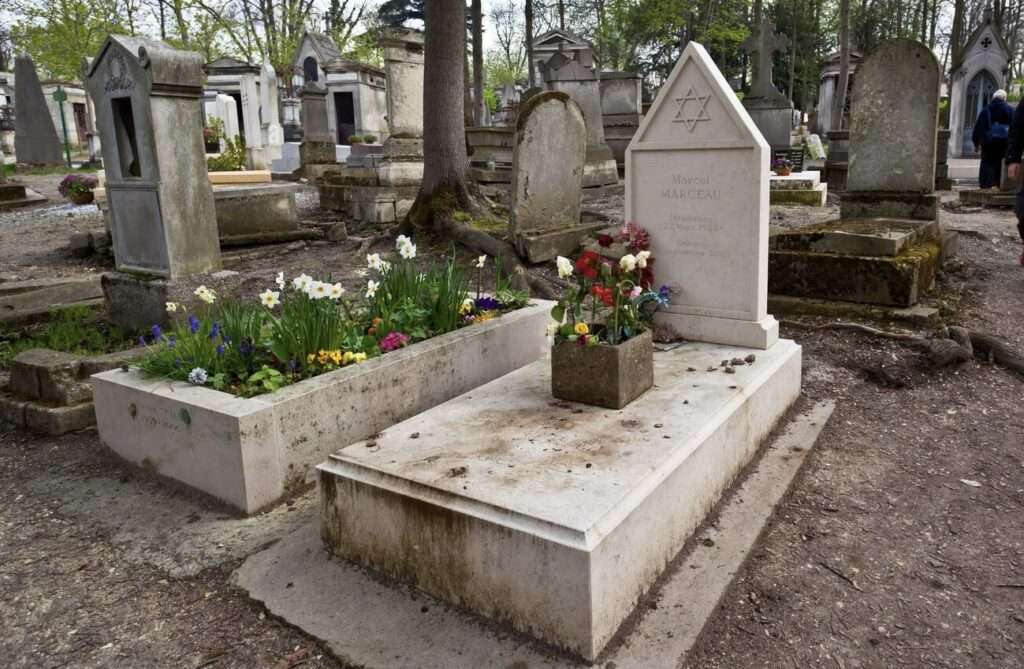
Marcel Marceau, the world-famous mime artist, is buried in Père Lachaise. Marceau’s character “Bip the Clown” and his silent performances have left a lasting impact on the world of theatre and performance art. His grave is a tribute to his innovative approach to mime and his enduring influence on the performing arts.
Fernand Arbelot (Division 54)
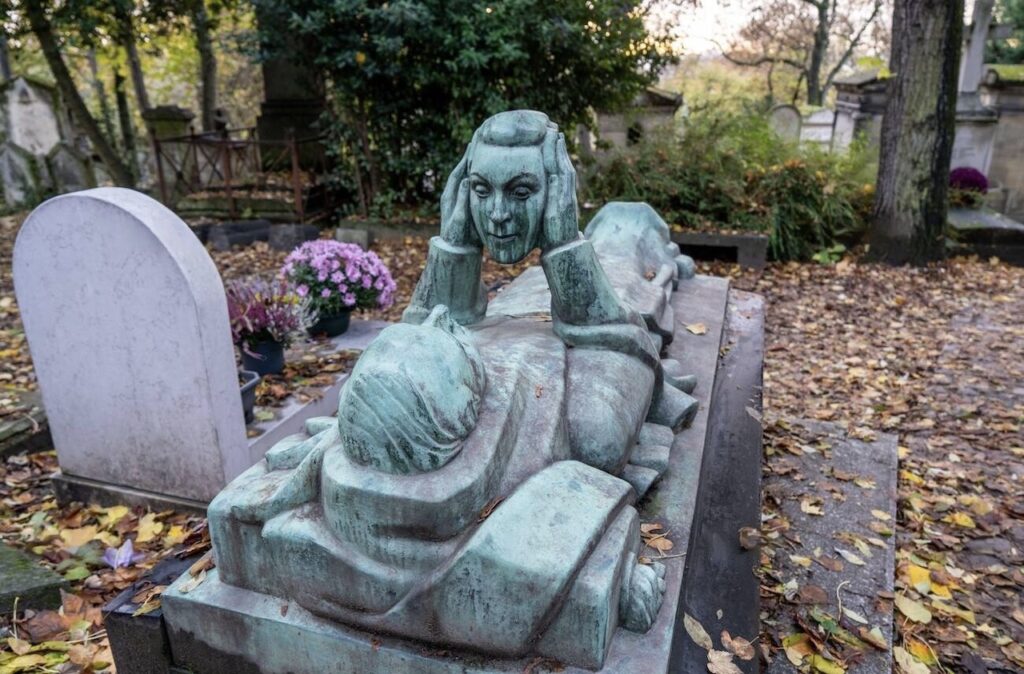
Although Belgian sculptor Adolphe Wansart’s lifelike sculpture of French actor Fernand Arbelot lying on his tomb while holding a mask representing his grieving wife supposedly to allow him to gaze at her through eternity—may no longer be remembered for his own achievements, it initially appears to be touchingly romantic.
Mano Solo
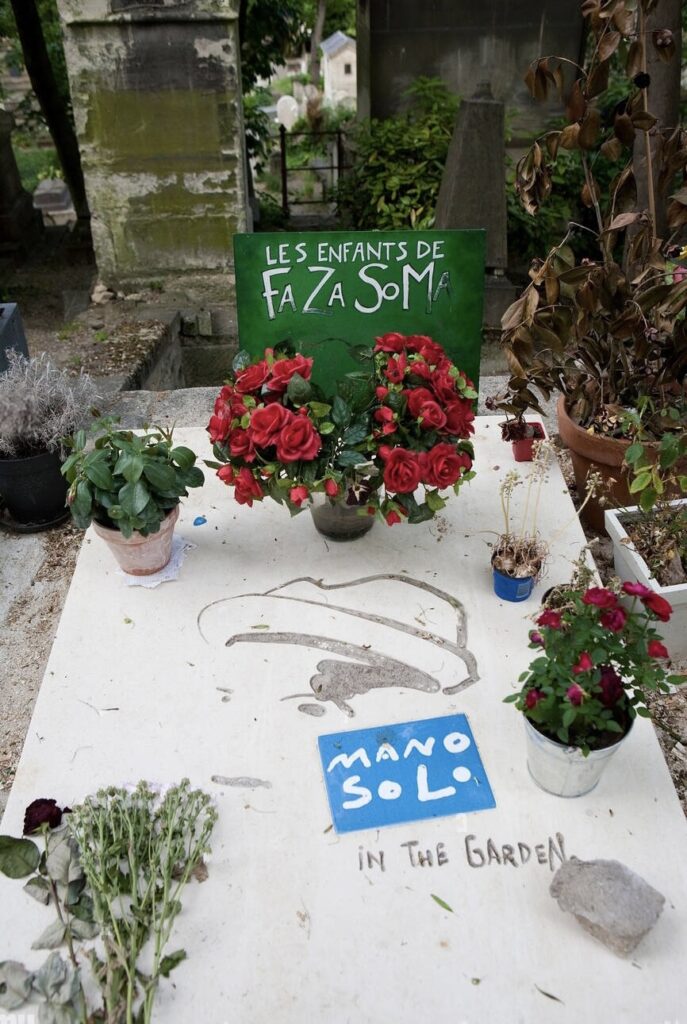
Mano Solo (born Emmanuel Cabut) was a well-known French singer-songwriter, guitarist, artist, activist for restoring equality (the inscription “Les Enfants de FaZa SoMa” on his grave refers to his support for the indigenous people of Madagascar), and occasionally actor and DJ. He was well-known in the avant-garde Parisian music scene for his appearances at the Bataclan and Olympia. After 20 years of fighting AIDS, he passed away in 2010 at the age of 46.
Louis Ernest Ladurée (Division 41)
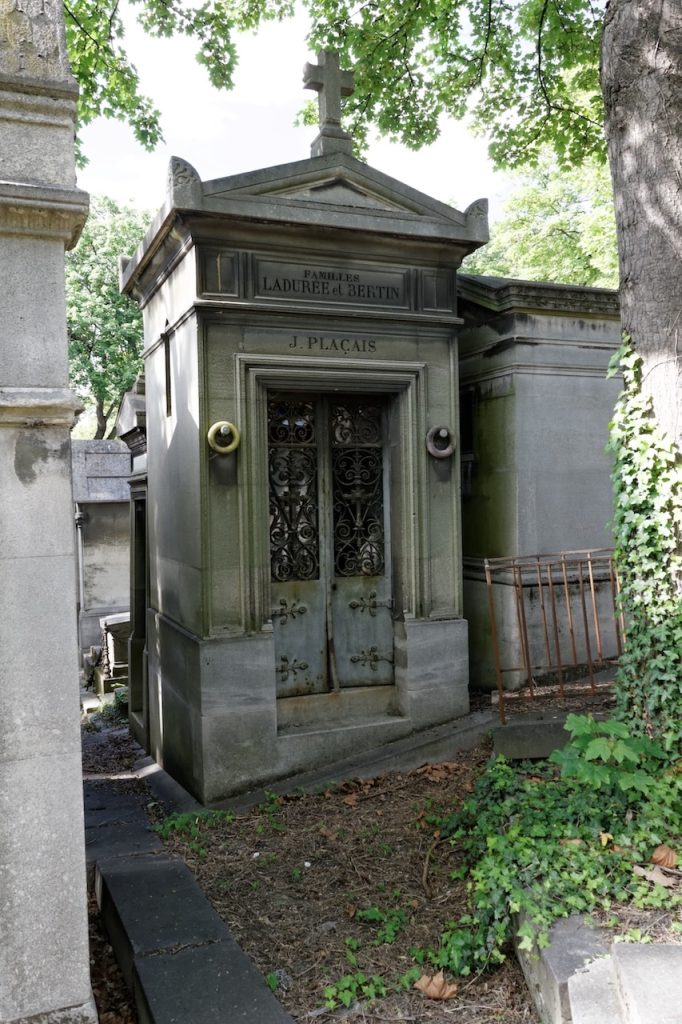
Louis Ernest Ladurée, founder of the famous Ladurée patisserie known for its macarons, rests in Père Lachaise. Ladurée’s legacy in the world of French pastry is celebrated by many. His grave is visited by those who love French cuisine and the exquisite delights of Ladurée’s creations.
Visitor Information for Père Lachaise Cemetery
Visiting Père Lachaise Cemetery is a unique and enriching experience, offering a chance to explore the resting places of many influential figures while enjoying the serene and contemplative environment of this historical site. Here’s what you need to know to make the most of your visit:
Location and Hours
Address:
Père Lachaise Cemetery is located in the 20th arrondissement of Paris, at 16 Rue du Repos, 75020 Paris, France.
Hours:
- The cemetery is open daily, with varying hours depending on the season:
- March to November: 8:00 AM to 6:00 PM (Monday to Friday), 8:30 AM to 6:00 PM (Saturdays), 9:00 AM to 6:00 PM (Sundays and public holidays).
- November to March: 8:00 AM to 5:30 PM (Monday to Friday), 8:30 AM to 5:30 PM (Saturdays), 9:00 AM to 5:30 PM (Sundays and public holidays).
Admission and Tours
Admission:
Entry to Père Lachaise Cemetery is free. However, guided tours often come with a fee, which can vary depending on the provider and the duration of the tour.
Guided Tours:
Guided tours are an excellent way to gain deeper insights into the history and stories behind the famous graves. Many tours are available in multiple languages and can be booked in advance through various tour operators. Some tours focus on specific themes, such as the graves of famous musicians, writers, or the historical significance of the cemetery.
Recommended guided tours
- The Père Lachaise Cemetery: Guided 2-Hour Small-Group Tour
- Famous Graves of Père Lachaise Cemetery Guided Tour
- Haunted Père Lachaise Cemetery Guided Tour
Maps and Navigation
Maps:
It is highly recommended to obtain a map upon arrival or download one from the cemetery’s official website. Maps are also available at the entrance for a small fee. These maps help locate specific graves and navigate the extensive grounds of the cemetery.
Navigating the Cemetery:
Père Lachaise is vast and can be challenging to navigate without a map. The cemetery is divided into divisions (sections), and the graves of famous individuals are spread throughout. Using a map will ensure you can efficiently plan your visit and locate the graves you are most interested in.
What’s the most effective way to begin? Download a map of Père Lachaise Cemetery burials location first. It will show you all 97 divisions as well as its avenues and alleyways.
Tips for Visitors
- Wear Comfortable Shoes: The cemetery’s cobblestone paths and uneven terrain can be difficult to walk on, so comfortable footwear is essential.
- Respectful Conduct: Remember that Père Lachaise is an active cemetery and a place of mourning. Keep noise to a minimum, respect the graves and monuments, and avoid stepping on graves.
- Photography: Photography is allowed, but be respectful of other visitors and the gravesites. Avoid taking photos of mourners or funerals.
- Weather Considerations: The cemetery is largely outdoors, so check the weather forecast and dress appropriately. Bring an umbrella or raincoat if rain is expected.
- Facilities: There are no restrooms within the cemetery grounds. Public restrooms can be found nearby, and it’s a good idea to plan accordingly before your visit.
How to get to the Père Lachaise Famous Graves
By Metro:
The cemetery is easily accessible by public transport. The nearest metro stations are:
- Philippe Auguste (Line 2): Located right next to the main entrance.
- Père Lachaise (Lines 2 and 3): A short walk from the main entrance.
- Gambetta (Line 3): Near the cemetery’s north entrance, ideal for starting at the top of the cemetery and walking downhill.
💡Travel tip: Start your walk near the Gambetta metro station and finish it closest to the Père Lachaise station. Walking in this direction will make your walk more of a downhill one!
By Bus:
Several bus lines serve the area, including lines 61, 69, and 102, with stops near the cemetery entrances.
By Car:
Limited parking is available near the cemetery, but it is generally recommended to use public transportation due to the cemetery’s urban location and potential parking difficulties.
Père Lachaise Famous Graves Map
Père Lachaise Cemetery, Entry Points, and Nearest Metro Stations are displayed on this interactive map.
Want to Find Out More about Père Lachaise Famous Graves?
Findagrave.com – To locate a specific grave, use the search option. The data is often correct, and there are also helpful images, connections to authoritative information sources, and GPS locations.



